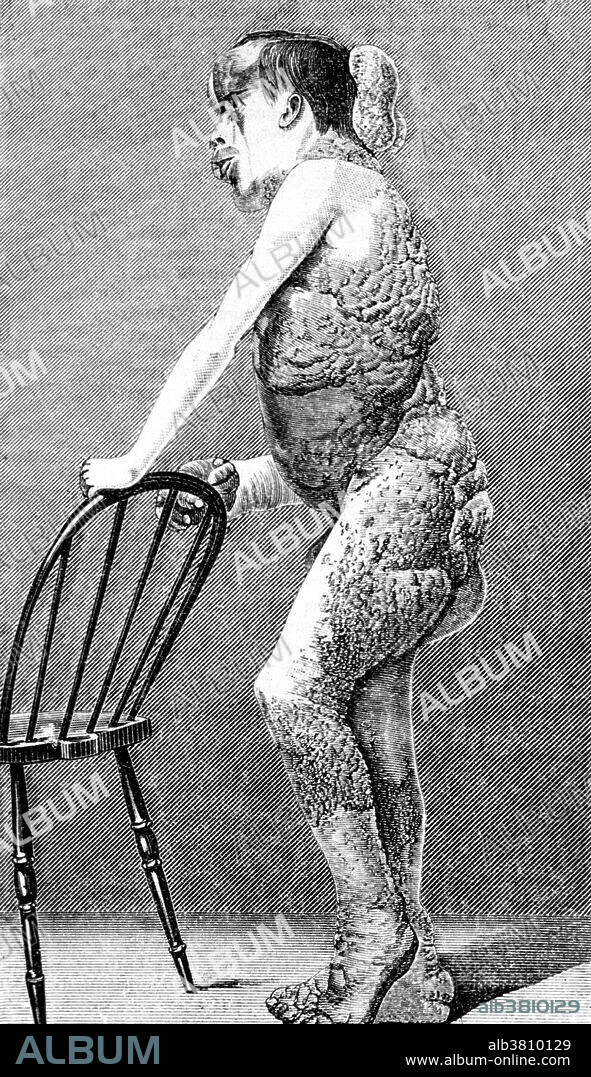alb3810129
Joseph Merrick, The Elephant Man

|
Add to another lightbox |
|
Add to another lightbox |



Title:
Joseph Merrick, The Elephant Man
Caption:
Joseph Carey Merrick (1862-1890) was an English man with severe deformities who was exhibited as a human curiosity named the Elephant Man. He became well known in London society after he went to live at the London Hospital. Although his condition was incurable, Merrick was allowed to stay at the hospital for the remainder of his life. English surgeon Frederick Treves visited him daily and the pair developed quite a close friendship. Merrick was originally thought to be suffering from elephantiasis. He died in 1890, aged 27. The official cause of death was asphyxia, although Treves, who dissected the body, said that Merrick had died of a dislocated neck. The exact cause of Merrick's deformities is unclear. The dominant theory was that Merrick suffered from neurofibromatosis type I. In 1986, a new theory emerged that he had Proteus syndrome. In 2001 it was proposed that Merrick had suffered from a combination of neurofibromatosis type I and Proteus syndrome. DNA tests conducted on his hair and bones have proven inconclusive.
Credit:
Album / NLM/Science Source
Releases:
Model: No - Property: No
Rights questions?
Rights questions?
Image size:
2400 x 4158 px | 28.6 MB
Print size:
20.3 x 35.2 cm | 8.0 x 13.9 in (300 dpi)
Keywords:
1862 • 1886 • 1890 • 19TH CENTURY • ART • ARTWORK • BW • CELEBRITY • CONGENITAL DISORDER • CONGENITAL • DEFORMED • DEFORMITY • DRAWING • ELEPHANT MAN • ELEPHANTIASIS • ENGLISH • ENGRAVING • EUROPEA • EUROPEAN • FAMOUS • FIGURE • GENETIC DISORDER • HISTORIC • HISTORICAL • HISTORY • HUMAN CURIOSITY • ILLUSTRATION • IMPORTANT • J. MERRICK • JOHN MERRICK • JOSEPH CAREY MERRICK • JOSEPH MERRICK • MALE • MAN • MEDICAL • MEDICINAL • MEN • MERRICK • NEUROFIBROMATOSIS TYPE I • NOTABLE • PATHOLOGY ABNORMAL • PEOPLE • PERSON • PERSONALITIES • PERSONALITY • PORTRAIT • POTRAIT • PROTEUS SYNDROME • SCIENCE • VICTORIAN ERA • VICTORIAN • VON RECKLINGHAUSEN DISEASE • WELL-KNOWN • WIEDEMANN SYNDROME
 Pinterest
Pinterest Twitter
Twitter Facebook
Facebook Copy link
Copy link Email
Email
